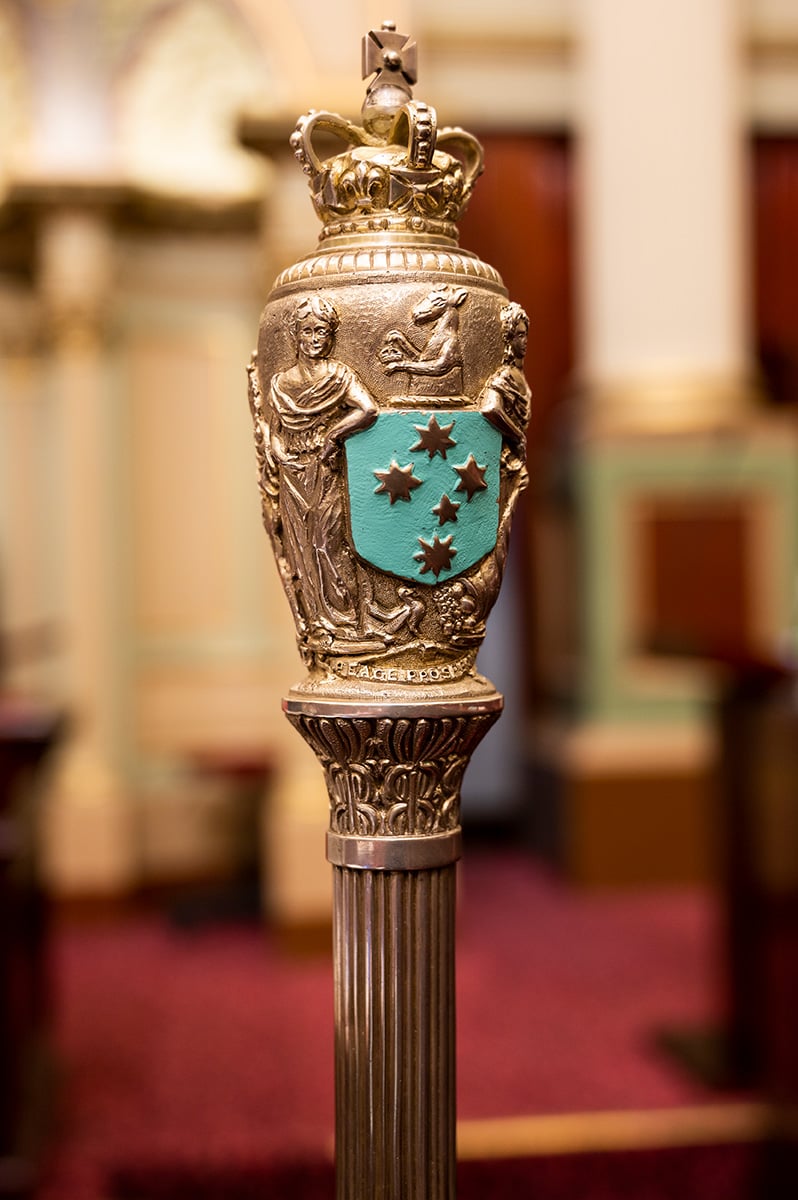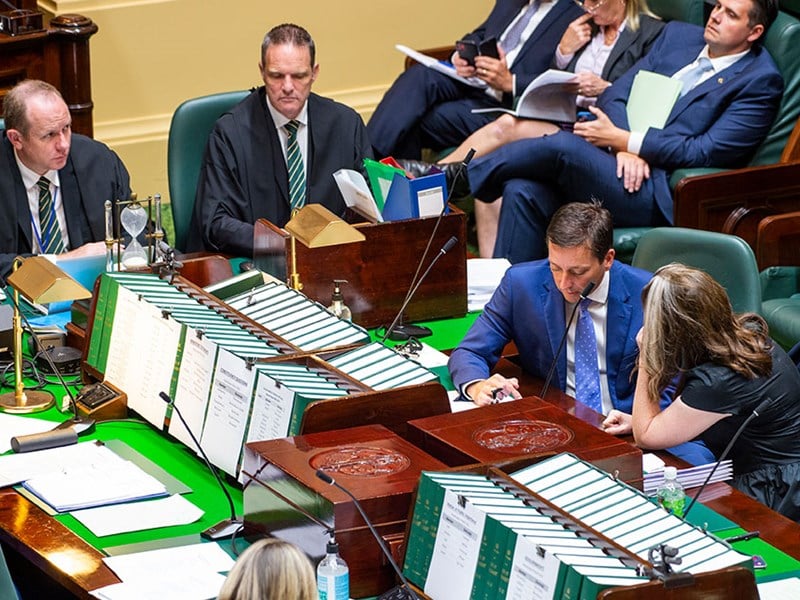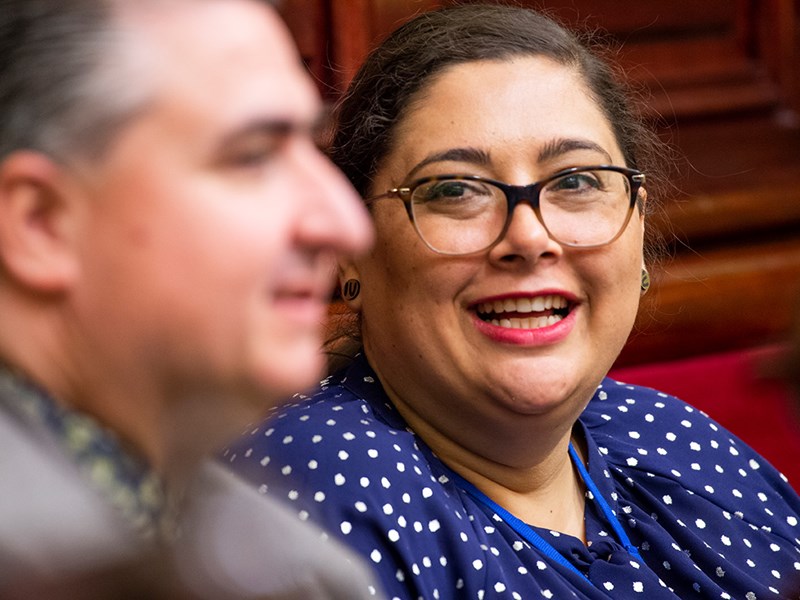People in Parliament
Learn about the different roles people play at Parliament, including the Premier, the Speaker and the President.
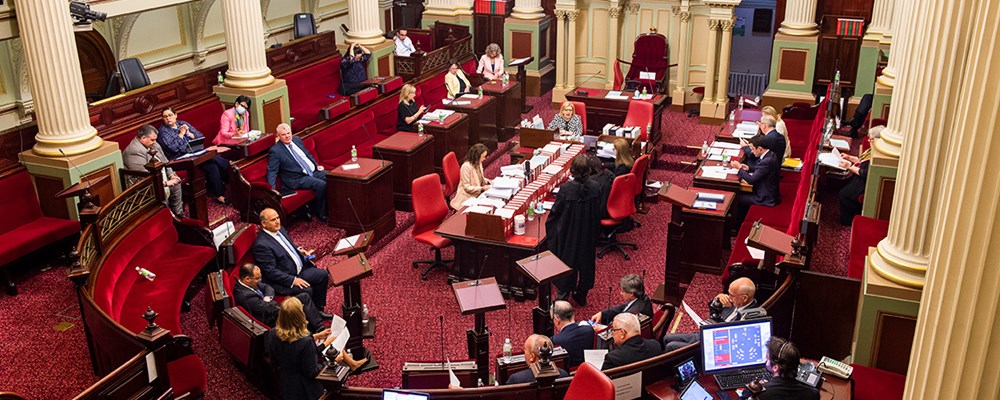
On this page
Members of Parliament
Members of Parliament are elected representatives of the Victorian people.
Every Victorian is represented by one Legislative Assembly member and five Legislative Council members.
Members represent the interests of their electorate, ask ministers questions, speak in debates and propose new laws.
Members can take on other roles within the Parliament, such as minister, parliamentary secretary or member of a parliamentary committee.
President and Speaker
The President leads meetings of the Legislative Council. In the Assembly, that role is known as the Speaker. Together, they are known as the Presiding Officers.
The Presiding Officers are both members of Parliament, elected to represent the people of their electorate. Other members vote to appoint them to the additional role of Presiding Officer.
The current President of the Council is the Hon. Shaun Leane MP.
The current Speaker of the Assembly is the Hon. Maree Edwards MP. She is the 38th person to hold the position.
Responsibilities on a sitting dayThe President and the Speaker:
- interpret and apply the rules of procedure and debate for their house
- run votes on bills and other matters
- call on members wishing to speak.
In the Council, the President may vote on issues being debated.
In the Assembly, the Speaker does not vote unless there is a tie. In this case, the Speaker has a casting vote.
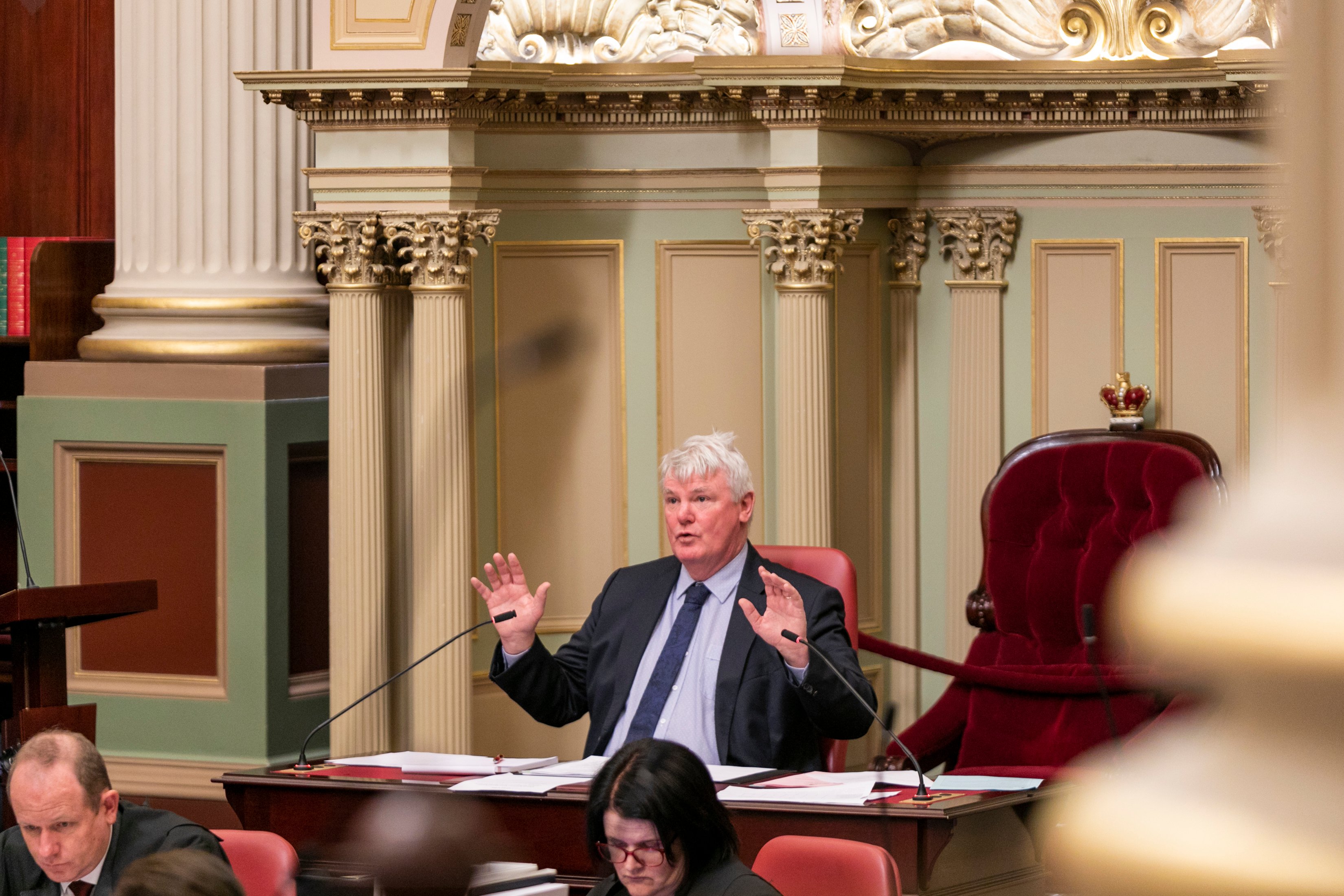
The President and the Speaker represent Parliament at meetings, functions and ceremonies.
They also oversee the administration of the Legislative Assembly, the Legislative Council and the parliamentary precinct as a whole. This includes security, staffing of members’ offices and approving events held at Parliament House.
As elected members of Parliament, the President and Speaker also represent their electorates in the Parliament.
Premier of Victoria
The Premier is the head of Victoria’s government. They are the leader of the party or coalition that has the support of the majority of members in the Legislative Assembly.
The Premier is an elected member of Parliament. They are chosen by other members of their party to lead them in government.
The current Premier is the Hon. Jacinta Allan MP, leader of the Victorian Labor Party and member for Bendigo East. She is Victoria’s 49th Premier.
ResponsibilitiesThe Premier of Victoria:
- chooses ministers and allocates portfolios
- heads the Department of Premier and Cabinet
- represents the government at meetings, functions and official ceremonies.
As an elected member of Parliament, the Premier also represents their electorate in the Legislative Assembly.
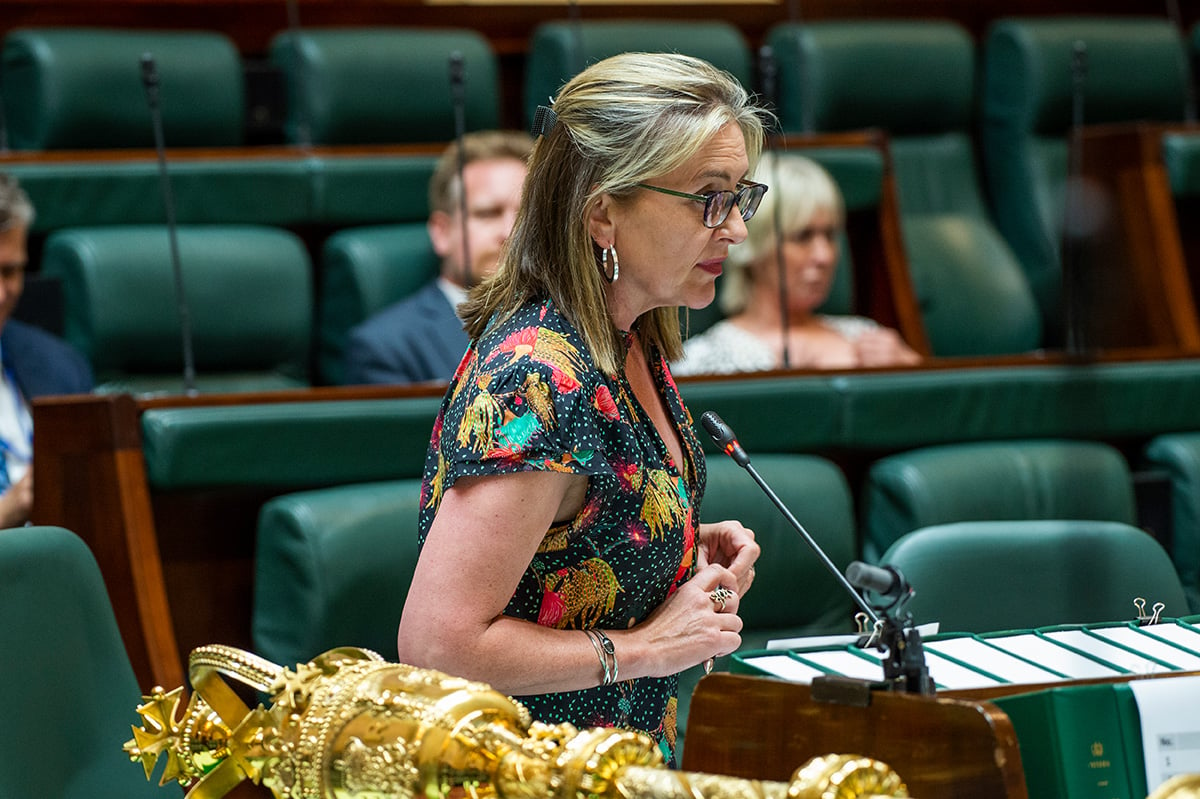
Leader of the Opposition
The Leader of the Opposition is the head of the largest non-government party (or coalition of parties) in the Legislative Assembly.
The Leader of the Opposition is an elected member of Parliament. They are chosen by other members of their party to lead them in opposition.
The current Leader of the Opposition is the Hon. John Pesutto MP, leader of the Victorian Liberal Party and member for Hawthorn.
ResponsibilitiesThe Leader of the Opposition:
- directs the opposition’s policies and strategies
- presents themselves as an alternative Premier
- represents their party at meetings, functions and official ceremonies
As an elected member of Parliament, the Leader of the Opposition also represents their electorate in the Legislative Assembly.
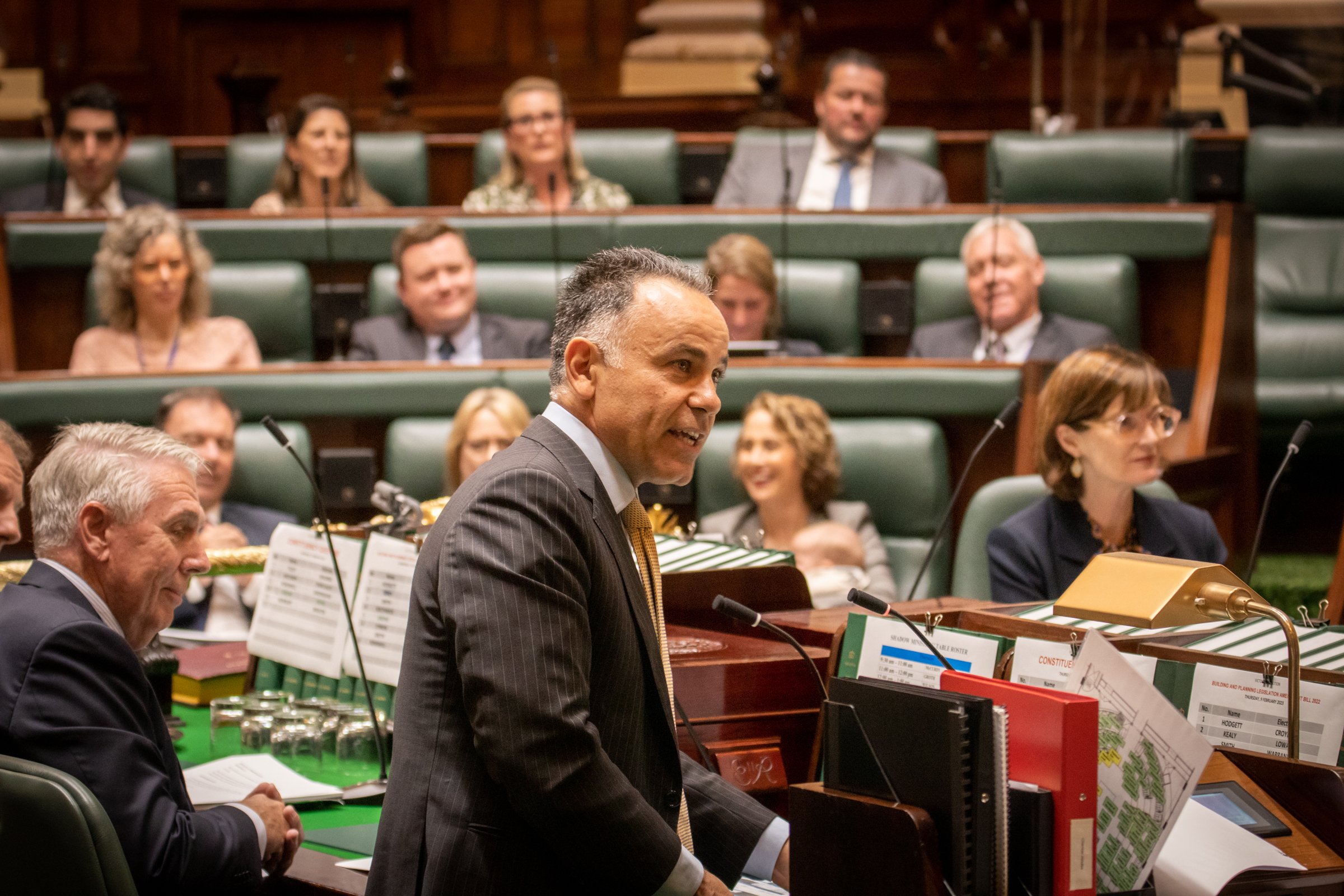
Governor of Victoria
The Governor is the King's representative in Victoria. They are appointed by the King on the recommendation of the Premier.
The current Governor is Her Excellency Professor the Honourable Margaret Gardner AC. She is the 30th Governor of Victoria.
ResponsibilitiesThe Governor of Victoria:
- gives Royal Assent to bills
- opens Parliament after each general election
- dissolves Parliament to call an election if there is a vote of no confidence in the government
- represents Victoria at meetings, functions and official ceremonies.
The Governor is also involved in charitable work and community engagement.
Details on the role of the Governor can be found at the Governor's official website.
Clerks
The clerks are the most senior unelected staff in the Legislative Council and the Legislative Assembly. The clerks provide advice to members on parliamentary rules and procedure.
Responsibilities on a sitting dayThe clerks:
- give advice to the Speaker, the President and other members on parliamentary rules and procedures
- certify that bills have been passed with the correct procedure
- table petitions and documents
- record the actions and decisions taken during the sitting
The clerks sit in front of the Speaker or President while Parliament is sitting.
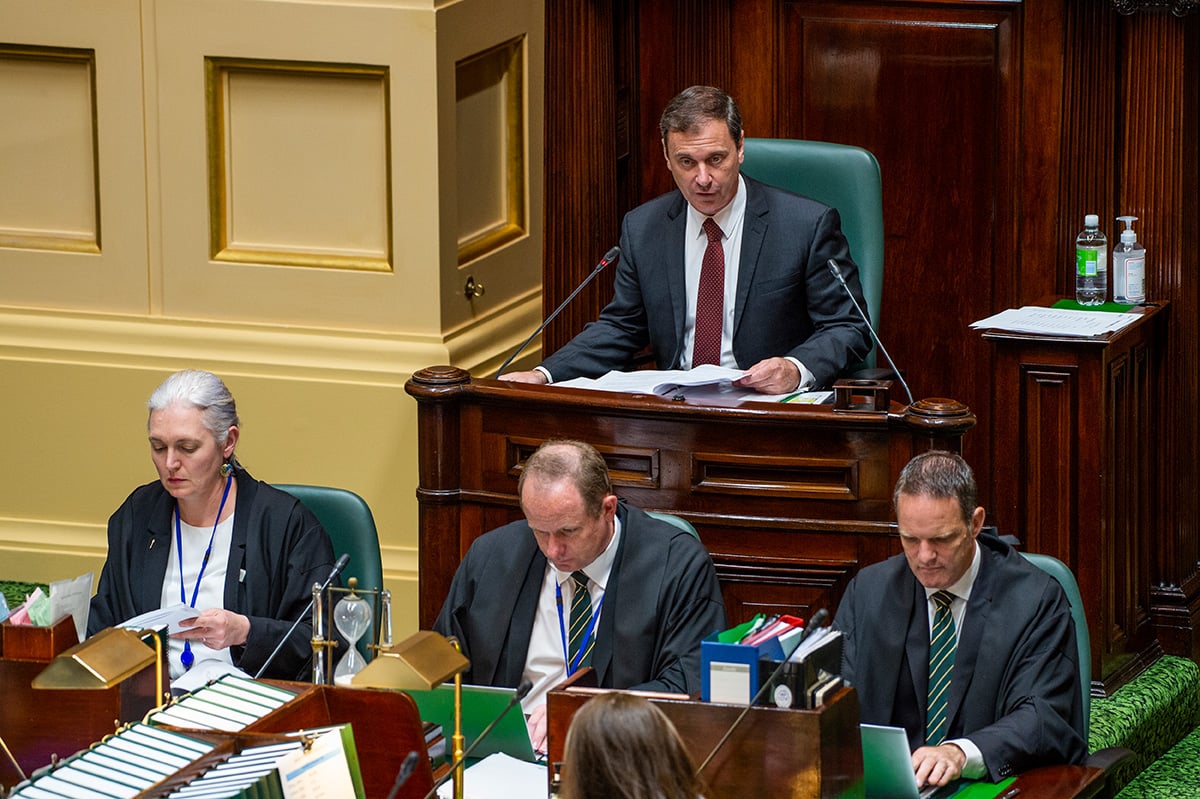
Serjeant-at-Arms
The Serjeant-at-Arms maintains order in the Legislative Assembly chamber and performs ceremonial duties. They carry the ceremonial mace at the start of every sitting day.
The Serjeant-at-Arms is a historical role. The United Kingdom’s House of Commons appointed its first Serjeant-at-Arms in 1415.
Responsibilities on a sitting dayThe Serjeant-at-Arms:
- leads the Speaker into the Chamber, carrying the ceremonial mace on their right shoulder
- maintains Chamber security and order in the public and media galleries
- on the order of the Speaker, removes anyone who is disorderly in the Chamber
- takes written messages to the Legislative Council.
Currently, the Serjeant-at-Arms is one of the clerks. When not performing official duties, the Serjeant-at-Arms may take on the role of acting clerk in the Chamber.
In 14th century England, the Serjeant-at-Arms carried a weapon called a mace. Today, the Legislative Assembly uses a ceremonial mace to represent the authority of the Speaker.
When the Speaker is in the chair, the mace is placed on the central table. The top of the mace always points towards the government side of the chamber.
The current mace was first used in Victoria in 1901. It weighs over 8 kilograms and is 1.52 metres long. It is made of silver with gold plating. Engraved on the staff are the names of the previous Speakers of the Victorian Parliament.
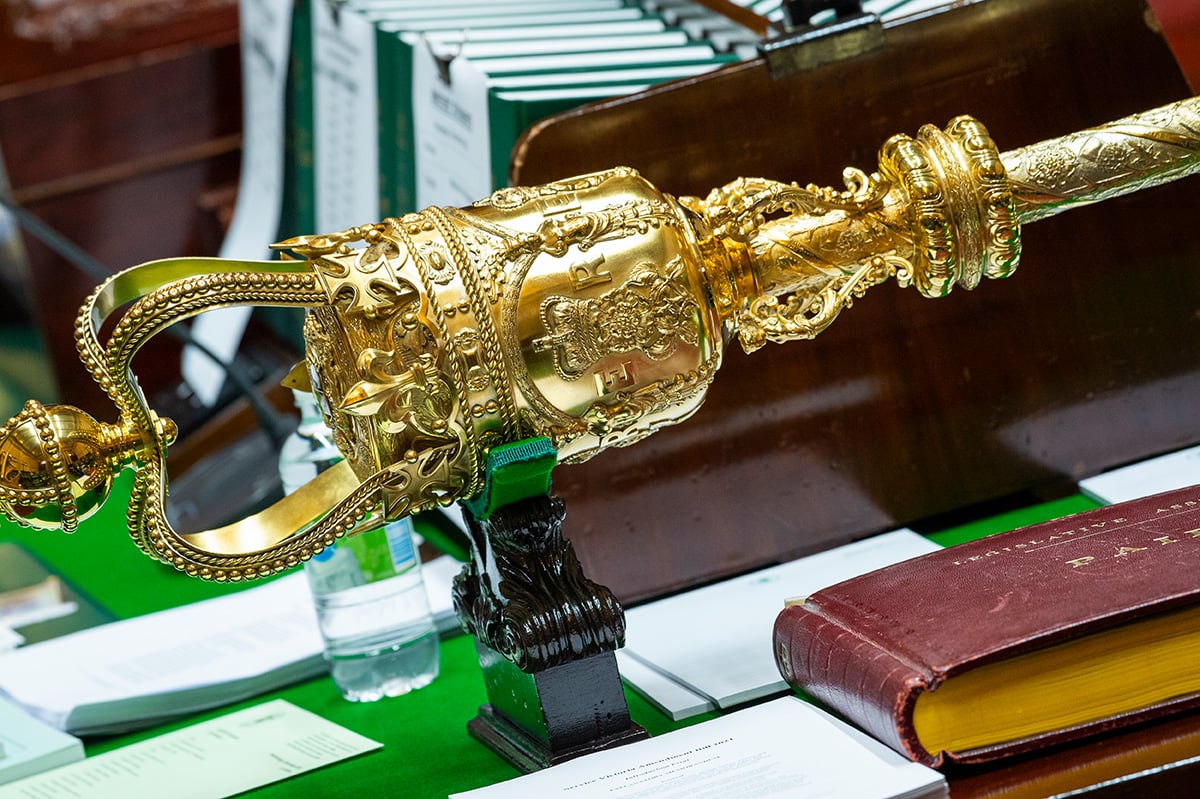
Usher of the Black Rod
The Usher of the Black Rod keeps order in the Legislative Council Chamber and performs ceremonial duties.
The Usher of the Black Rod is a historical role. The United Kingdom’s House of Lords appointed its first Usher of the Black Rod in 1361.
Responsibilities on a sitting day
The Usher of the Black Rod:
- leads the President into the Chamber, carrying the ceremonial black rod.
- maintains Chamber security and order in the public and media galleries
- on the order of the President, removes anyone who is disorderly in the Chamber.
- takes written messages to the Legislative Assembly.
The Black Rod was first used in England in 1361. Today, the Legislative Council uses a Black Rod to represent the authority of the President.
When the President is in the chair, the Black Rod is placed on a purpose-built stand next to the central table.
The Black Rod is made of fiddleback blackwood, with the head, foot and joint made of gilded sterling silver.
Victoria did not have a Black Rod until 1952. Before this, the Usher of the Black Rod was known as the ‘Gentleman Usher’.
